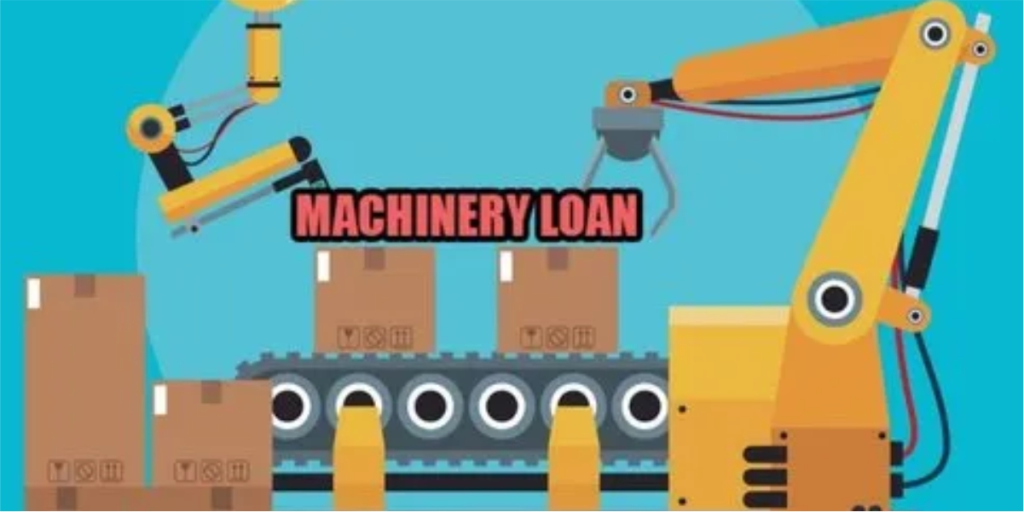
In our modern business era, which is constantly changing, being ahead may involve the replacement of your machines. To a large extent , these changes in technology could sound financially burdensome to some Indian entrepreneurs and industries. The grinding nature of the fund is therefore the machinery loans come to the rescue. Of those looking to invest in new machines or upgrade their existing ones.
What Are Machinery Loans?
Machinery loans, also referred to as equipment loans or heavy equipment financing, are specialized financial instruments especially created for purchasing/replacing machines/equipment. These machinery loans are aimed at enterprises operating in almost all sectors, which include manufacturing, construction, agriculture, and transport, to mention a few. With machinery loans, small businesses can establish that important foundation to get vital equipment, which may include industrial machines, heavy vehicles, machinery and technology.
How Do Machinery Loans Work?
Those are machinery loans that mostly resemble any other business loan. You use the estimation of the machinery cost to make the amount of credits you want to borrow. Subsequently, the lender checks your organization’s financial and credit health. Finally the value of the machinery to establish whether it can lend you the money.
If the machinery is being purchased new, the lender will often require a down payment or collateral to secure the loan. Whatever is the case, machinery loans function comparably to small business loans only that the latter are designed solely for the purchase of equipment.
Equipment Assessment: As an entrepreneur, you decide the machinery or the equipment you want and calculate the prices you will pay. It is possible to execute this by looking into the suppliers, asking for the price estimates, and analysing the cash flow in the project.
Loan Application: As soon as you have learned the facts about the machinery costs, you can get a machinery loan for machinery from the lending institution. In the meantime, you write the information about your division, your financial history and what exact equipment you will buy.
Financial Evaluation: The lender will examine the solvency of your organization, which involves features such as your credit reputation, income, money flow, and debt burden. This judgment is based on the lender’s consideration of your loan-paying ability and your creditworthiness.
Equipment Valuation: To determine whether you can qualify for business equipment credit, the lender, however, examines your creditworthiness, and also judges the asset’s value and condition. This usually means placing an evaluation on the asset to figure out how much should be borrowed against it, and how much the asset will be worth in case of default.
Loan Approval: If the application fits in lender’s criteria and the equipment is valued as an adequate collateral, then the machinery loan is approved. The lender details the loan amount, rate of interest, payment schedule, and any other charges or terms.
Equipment Acquisition: The cash approved under the loan will help you buy the machinery or equipment needed from the supplier. The lender usually provides the dollars to the machine vendor or agrees to pay instead of your company.
Repayment: Acquiring the necessary equipment is just step one on your journey towards loan repayments. You start with making regular payments according to the previously agreed schedule. The payments can either be at a fixed monthly installment or such that can be tuned according to your cash flow and business needs.
Ownership Transfer: Although the items serve as the source of security of the machinery loan, their property rights are usually retained by your business. When the loan is fully repaid you finally gain all the ownership rights to the machinery and you no longer have to rent the for your operations.
Therefore, the machinery loan scheme offers the enterprises an opportunity for the financial disposability to invest in vital manufacturing tools and to facilitate growth, efficiency, and competitiveness in their different industries.
Key Benefits of Machinery Loans
- Improved Cash Flow: Equipment financing, by eliminating the need to put up your idle capital in machines purchase, enables you to save money for other operational costs.
- Tax Benefits: The Indian government offers a special tax relief for buying machinery. It includes interest deductions and depreciation write-offs.
- Flexible Repayment Options: Lenders provide payment terms which meet your convenience in repayment and make sure you settle your debt on time.
- Upgrade to Latest Technology: The machine credit allows businesses to upgrade their technology and resources. To keep their operations on the cutting edge.
Types of Machinery Loans
Term Loans: The machine financing in process involves borrowing a large amount of money for a certain period of time that is mostly a given amount from a financial institution or a lender. These loans are supposed to be returned in a fixed timeframe, most frequently within a variable scale of months to years. Fixed or floating interest terms can be part of a term loan. Fixed rates are standard for the whole loan period, creating a predictable stream of payments against a floating one which could change according to market dynamics.
Equipment Financing: Equipment financing is an array of financial tools for businesses who seek to obtain the specific equipment needed for effective running of their enterprises. Here, a device frequently acts as collateral, protecting a lender’s interest in the transaction. Equipment financing is an option for businesses, allowing them to acquire an array of machinery, including large scale machinery to precise tools. This type of loan helps companies to neutralize the price of their asset purchases by spreading the cost over a period of time, which is convenient for their budget.
Lease Financing: Leasing provides enterprises with an alternative to expensive purchases of machinery and equipment with lower initial requirements of a sum of cash. Instead of buying the needed equipment, companies lease an amount similar to the expenditure to a leasing company. In lease financing, the business pays equidistant lease payments to the lessor in payment of the offered equipment use over a specified time frame. Contrary to the equipment financing, the business does not have to buy the machinery at the end of the lease term. Thus, the business gets to enjoy low upfront costs as well as the easiness of transitioning to better and modern equipment.
Asset-Based Loans: The mechanism of asset-based loans is pledging the machinery and equipment that the business already owns to obtain funds, which will be considered as collateral. In this model of borrowing, the lender assays the value of the business’s assets and awards a credit line or a loan corresponding to this value. The collateral loans especially apply to the businesses that have strong asset position but there could be some difficulties in obtaining conventional financing due to the background of the credit history or the level of the cash flow. Such loans allow businesses to take advantage of the capital they would ordinarily not have direct access to and use their existing assets as collateral.
Revolving Lines of Credit: The revolving lines of credit function in a manner which provides businesses with flexible access to funds that can be used to acquire necessary machinery and equipment as needed. Differently from the term loans, where the whole loan amount is provided at one time, revolving lines of credit grant businesses the freedom to borrow money as best fits their needs, limited only by the set lending limit. The companies have options to make loans, repay as well as redraw every time, which makes them interchangeable tools for money for machinery purchases. Charges interest on the amount loaned, thus, providing business with inexpensive sources to finance their machinery acquisition.
Before applying for a machinery loan, consider the following factors:
Loan Amount: Determine the exact part of the amount you will be consuming while also upgrading your machinery.
Interest Rates: Compare interest rates offered by financial institutions to come up with the most competitive deal for yourself.
Repayment Terms: Assess among repayment terms of the loan. That includes not only the time in which you pay back the loan but also the frequency of the payment to suit your business’s cash flow.
Collateral Requirements: Some machinery loans may have a call for security and that is the reason why binding is always necessary. I.e., if you want to try out this loan.
Lender Reputation: Get an institution that has a good view of the market and has established itself. To the extent of being very transparent in their dealings and as well provides excellent customer service.
How to Apply for a Machinery Loan
Gather Documentation: Equip yourself with financial documents like balance sheet, profit and loss statement and tax return when seeking for a loan.
Research Lenders: Explore and compare different lenders providing equipment loans based on conditions. Such as the interest rates and borrowing costs and feedback from customers.
Submit Application: Completing the loan application form, including all documents including details.
Wait for Approval: A couple of days later you will be notified about the results of the lender’s assessment and whether your loan has been approved.
Loan Disbursement: In the event of the approval, the lender disburses the loan amount. Which in turn you can use to purchase more modern machines.
Conclusion
The industrial loans in machinery finance represent the major part assisting businesses to create a good atmosphere for investment in productive equipment and varieties. Through realization of the mode of operation, pros and cons of these loans, and the application procedure, entrepreneurs can make the responsible choices. These choices fuel growth and success. If you are currently thinking of getting upgraded machines for your business, study what other options there are. Choose Loanz360’s machinery loan to suit your business profits. Contact Loanz360 for more information. Also, you can check your credit score now here.







